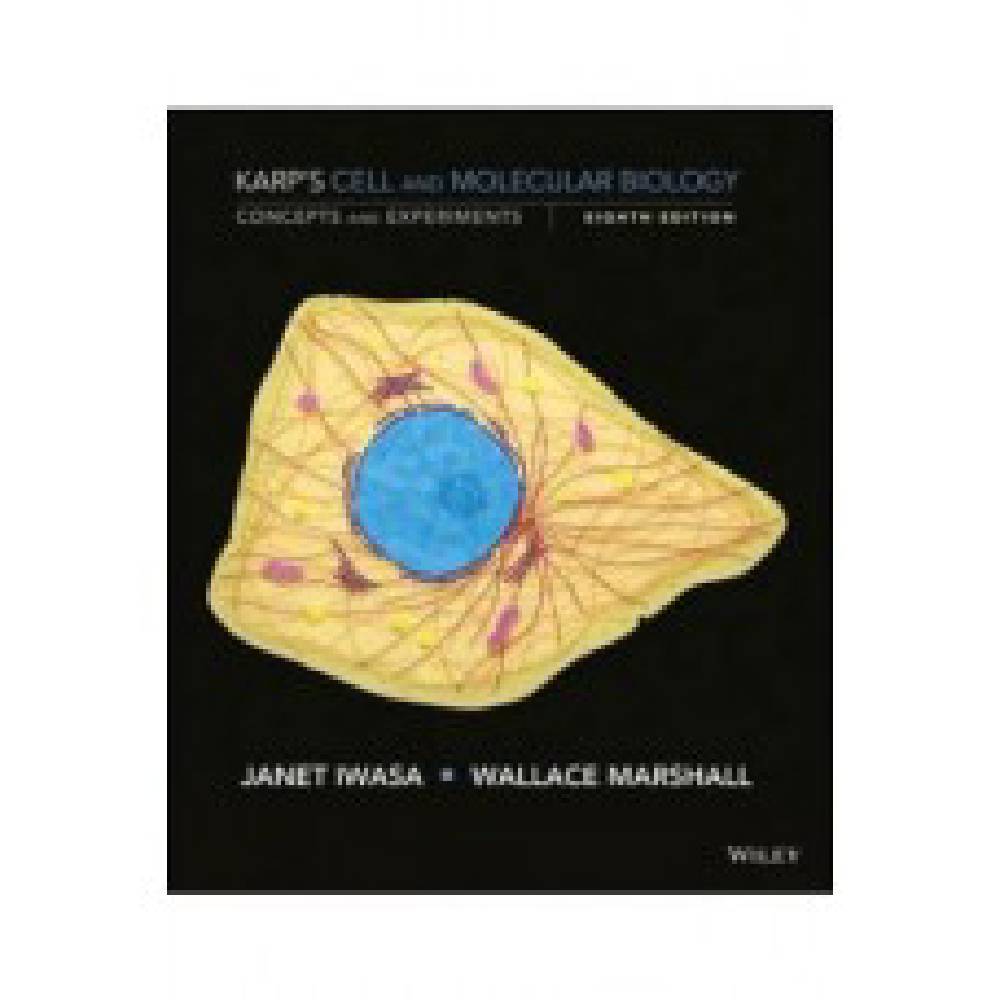Karps Cell And Molecular Biology 8th Edition By Karp – Test Bank
$55.00
Karps Cell And Molecular Biology 8th Edition By Karp – Test Bank
You will receive this product within 24 hours after placing the order
Karps Cell and Molecular Biology 8th Edition By Karp – Test Bank
Chapter Number: 11
Question Type: Multiple Choice
1) Who was the first to report that certain rare inherited diseases were caused by the absence of specific enzymes?
a) Charles Darwin
b) Archibald Garrod
c) George Beadle
d) Vernon Ingram
e) James Watson
Answer: b
Difficulty: Easy
Learning Objective: LO 11.1 List the people responsible for the research which led to the current knowledge of the relationship between genes and proteins and briefly describe their work.
Section Reference: Section 11.1 The Relationship Between Genes and Proteins
2) Alcaptonuria is a genetic disease that is characterized by _________.
a) urine turning dark upon exposure to the air
b) mental retardation
c) paralysis
d) urine smelling and tasting like maple syrup
e) high fevers
Answer: a
Difficulty: Easy
Learning Objective: LO 11.1 List the people responsible for the research which led to the current knowledge of the relationship between genes and proteins and briefly describe their work.
Section Reference: Section 11.1 The Relationship Between Genes and Proteins
3) An alcaptonuric lacks the enzyme that oxidizes what metabolite?
a) phenylalanine
b) tyrosine
c) homogentisic acid
d) asparagine
e) pantothenic acid
Answer: c
Difficulty: Easy
Learning Objective: LO 11.1 List the people responsible for the research which led to the current knowledge of the relationship between genes and proteins and briefly describe their work.
Section Reference: Section 11.1 The Relationship Between Genes and Proteins
4) What did Archibald Garrod call diseases like alcaptonuria?
a) deadly diseases
b) inborn errors of transcription
c) homogentisms
d) errors
e) inborn errors of metabolism
Answer: e
Difficulty: Easy
Learning Objective: LO 11.1 List the people responsible for the research which led to the current knowledge of the relationship between genes and proteins and briefly describe their work.
Section Reference: Section 11.1 The Relationship Between Genes and Proteins
5) What did Beadle and Tatum use to generate mutations in their experimental organism?
a) mustard gas
b) irradiation with ultraviolet light
c) fluorescent dyes
d) ethidium bromide
e) Coomassie blue
Answer: b
Difficulty: Easy
Learning Objective: LO 11.1 List the people responsible for the research which led to the current knowledge of the relationship between genes and proteins and briefly describe their work.
Section Reference: Section 11.1 The Relationship Between Genes and Proteins
6) Beadle and Tatum’s research suggested that __________.
a) a gene carries the information to build lipids
b) a gene carries the information to build carbohydrates
c) a gene carries the information for the construction of a particular enzyme
d) a gene is made of RNA
e) a gene is made of DNA
Answer: c
Difficulty: Medium
Learning Objective: LO 11.1 List the people responsible for the research which led to the current knowledge of the relationship between genes and proteins and briefly describe their work.
Section Reference: Section 11.1 The Relationship Between Genes and Proteins
7) What was the new name of Beadle and Tatum’s hypothesis after it was discovered that some enzymes were composed of more than one polypeptide chain?
a) the One Gene – One Enzyme hypothesis
b) the One Gene – One Polypeptide hypothesis
c) the One Polypeptide – One Enzyme hypothesis
d) the One Polypeptide – One Gene hypothesis
e) the One Gene – Two Gene hypothesis
Answer: b
Difficulty: Easy
Learning Objective: LO 11.1 List the people responsible for the research which led to the current knowledge of the relationship between genes and proteins and briefly describe their work.
Section Reference: Section 11.1 The Relationship Between Genes and Proteins
8) Why has the One Gene – One Polypeptide hypothesis had to be modified?
a) It was totally wrong.
b) Genes can be spliced differently to generate a variety of related polypeptides.
c) Enzymes sometimes consist of more than one polypeptide, each of which is coded for by its own gene.
d) Enzymes actually code for genes.
e) Polypeptides code for genes.
Answer: b
Difficulty: Medium
Learning Objective: LO 11.1 List the people responsible for the research which led to the current knowledge of the relationship between genes and proteins and briefly describe their work.
Section Reference: Section 11.1 The Relationship Between Genes and Proteins
9) Which scientist is best known for his work on sickle cell anemia and proving the mechanism that causes the disease?
a) Charles Darwin
b) Archibald Garrod
c) George Beadle
d) Vernon Ingram
e) James Watson
Answer: d
Difficulty: Easy
Learning Objective: LO 11.1 List the people responsible for the research which led to the current knowledge of the relationship between genes and proteins and briefly describe their work.
Section Reference: Section 11.1 The Relationship Between Genes and Proteins
10) What difference between sickle cell and normal hemoglobin is apparently responsible for all of the symptoms associated with sickle cell anemia?
a) The difference is a valine substitution in the mutant sickle cell hemoglobin for a glutamic acid in the normal molecule.
b) The difference is a glutamic acid substitution in the mutant sickle cell hemoglobin for a valine in the normal molecule.
c) The sickle cell hemoglobin is longer.
d) The sickle cell hemoglobin is shorter.
e) The sickle cell hemoglobin is translated backwards.
Answer: a
Difficulty: Hard
Learning Objective: LO 11.1 List the people responsible for the research which led to the current knowledge of the relationship between genes and proteins and briefly describe their work.
Section Reference: Section 11.1 The Relationship Between Genes and Proteins











Reviews
There are no reviews yet.